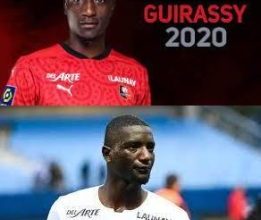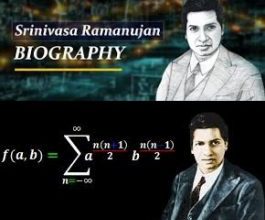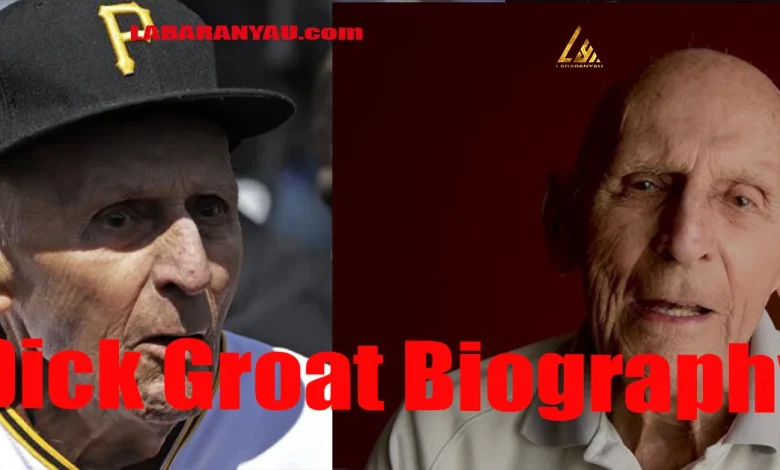
Dick Groat Biography (1930 to 2023)
Richard Morrow Groat (November 4, 1930 – April 27, 2023) was an exceptional American athlete who made his mark in both professional baseball and basketball.
An eight-time MLB All-Star shortstop and two-time World Series champion, he is widely recognized as one of the most accomplished dual-sport athletes in American sports history.
Notably, he was a college All-American in both baseball and basketball, and one of only 13 athletes ever to play both sports at the professional level.
In 1960, Groat reached the pinnacle of his baseball career, earning the National League Most Valuable Player award while leading the Pittsburgh Pirates to a World Series title. That season, he also claimed the batting crown with an impressive .325 average.
Throughout 14 MLB seasons, Groat maintained a career batting average of .286, amassing 2,138 hits across four National League teams.
From 1956 to 1962, he formed one of baseball’s most effective middle infield duos with Hall of Famer Bill Mazeroski, anchoring the Pirates’ defense with remarkable synergy.
At the time of his retirement, Groat ranked ninth in MLB history in games played at shortstop (1,877 games) and fourth in double plays turned.
A proud alumnus of Duke University, Groat was a member of the Sigma Chi fraternity and a standout in both sports.
He was a two-time All-American and two-time McKelvin Award winner as the Southern Conference Athlete of the Year.
He also made history by becoming the first basketball player in Duke’s history to have his jersey number (#10) retired.
In 2011, Richard Groat achieved yet another remarkable milestone by being inducted into the National College Baseball Hall of Fame, becoming the first person ever to be honored in both the college basketball and college baseball Halls of Fame.
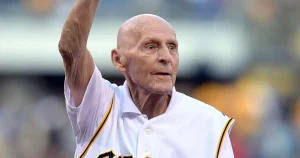
Dick Groat Wikipedia
| Category | Details |
|---|---|
| Full Name | Richard Morrow Groat |
| Born | November 4, 1930, Wilkinsburg, Pennsylvania |
| Died | April 27, 2023, Pittsburgh, Pennsylvania |
| Height | 5 ft 11 in (1.80 m) |
| Weight | 180 lbs (82 kg) |
| Primary Sports | Baseball & Basketball |
| Position (Baseball) | Shortstop |
| Position (Basketball) | Point Guard |
| MLB Teams | Pittsburgh Pirates, St. Louis Cardinals, Philadelphia Phillies, San Francisco Giants |
| NBA Team | Fort Wayne Pistons |
| World Series Champion | 1960 (Pittsburgh Pirates) |
| 1960 World Series MVP | Yes, despite injury |
| NL Batting Champion | 1960 (.325 BA) |
| MLB Stats (Games Played) | 1,929 |
| MLB Batting Average | .286 |
| MLB Hits | 2,138 |
| MLB RBIs | 707 |
| NBA Career Stats (PPG) | 11.9 points per game |
| Duke University | #10 Retired, Consensus All-American (1952) |
| Pirates Hall of Fame | Inducted posthumously in 2023 |
| Post-Playing Career | Radio Analyst for Pittsburgh Panthers (1979–2019), Golf Course Designer |
| Personal Life | Married to Barbara Womble, 3 daughters, Great-uncle of golfer Brooks Koepka |
| Legacy | One of 13 athletes to play both MLB & NBA |

Dick Groat Early Life and Education
Groat was born in Wilkinsburg, Pennsylvania, to Martin and Gracie Groat, as the youngest of five siblings.
He grew up in Swissvale, Pennsylvania, where he attended Swissvale High School.
During his high school years, he showcased his athletic versatility by earning varsity letters in basketball, baseball, and volleyball.

Dick Groat College Athletic Career
Richard Groat earned a basketball scholarship to Duke University, where he became a standout two-sport athlete, excelling in both basketball and baseball.
In basketball, he achieved remarkable success, being named a two-time All-American (1950–51, 1951–52).
He also received the Helms Foundation Player of the Year award for the 1950–51 season. During the 1951–52 season, Groat was named the Southern Conference Player of the Year and UPI National Player of the Year after setting an NCAA record by scoring 839 points in a single season.
In his final regular-season game at Duke, Groat scored 48 points against the University of North Carolina, the highest total ever by a Tar Heels opponent.
The Blue Devils dominated the game with a 94–64 victory, marking their 13th consecutive win.
Duke extended the streak to 15 with wins over Maryland and West Virginia in the Southern Conference Tournament, but ultimately fell to North Carolina State, 77–68, in the championship game, missing out on an NCAA Tournament bid.
On May 1, 1952, Groat’s legendary contributions were honored when Duke retired his jersey number 10, making him the first basketball player in school history to receive that distinction.
His number remained the only retired number at Duke for 28 years. Later, on November 18, 2007, Groat was inducted into the National Collegiate Basketball Hall of Fame.

In baseball, Groat played as a shortstop for Duke and had an outstanding senior year in 1952, leading the team to a 31–7 record and their first-ever College World Series appearance.
That season, he posted a .370 batting average and led the team in doubles, hits, RBIs, and stolen bases.
He was twice honored with the McKelvin Award, recognizing him as the Southern Conference Athlete of the Year.
Following his junior year, Pittsburgh Pirates general manager Branch Rickey offered Groat a professional contract, while allowing him to complete his college degree in the offseason.
Out of respect for Duke’s scholarship commitment, Groat declined at the time, but gave Rickey his word that he would accept the same offer if made the following year.
True to his word, Groat signed with the Pirates in June 1952 after graduating.
The contract was estimated between $35,000 and $40,000, including a generous $25,000 signing bonus.
Though other teams, including the St. Louis Cardinals and New York Giants, also pursued him, Pittsburgh had the hometown edge.
Growing up just six miles from Forbes Field in Swissvale, Groat had always dreamed of playing for the Pirates.
Notably, his contract was signed during a brief window when MLB’s bonus rule was not enforced, meaning the Pirates were not required to keep him on their major league roster immediately, unlike many “bonus baby” players of the era.
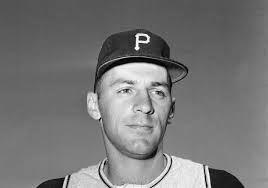
Dick Groat Professional Athletic Career
At just 21 years old, Richard Groat joined the Pittsburgh Pirates on June 17, 1952, in New York, remarkably, without spending a single day in the minor leagues.
The very next day, he made his Major League debut, quickly proving his readiness by finishing the season with a team-leading .284 batting average, notching 109 hits and 29 RBIs.
Shortly after his MLB debut, Groat embarked on a second professional sports career, joining the Fort Wayne Zollner Pistons of the NBA.
However, just four months into the basketball season, he enlisted in the U.S. Army, strategically timing his service so that his discharge would align with the start of baseball spring training two years later.
While in the military, Groat led Fort Belvoir’s teams to worldwide Army championships in both baseball and basketball, a first in Army history.
He was dominant in both sports, batting .362 on the diamond and averaging an incredible 35 points per game on the court.
Upon returning to the Pirates in 1955, Groat led the struggling team in hits (139) and topped the National League in putouts as a shortstop.
Though 1956 saw him set an unfortunate MLB record, most at-bats (520) in a season without a home run or stolen base, manager Bobby Bragan attempted to strengthen their relationship by naming him team captain mid-season.
Groat finished with a .273 average, and after a late-season slump, he focused on improving his swing mechanics during the offseason.
Pirates general manager Joe Brown, who worked with Groat during his final seven seasons in Pittsburgh, praised his selfless leadership. In a 1961 Sport magazine interview, Brown remarked, “(Groat) sets an example for the rest of the team. If he goes 5-for-5 and the team loses, he’s unhappy. If he goes 0-for-5 and the team wins, he’s happy. He’s a constant reminder that a player can make himself a star without having all the tools.”
Groat had a strong start to the 1957 season, batting .319 in April and .370 in May, briefly putting him in contention for the NL batting title.
He finished with a .315 average (fifth in the league) and a career-high seven home runs.
That September, he made history by throwing out the final batter at the Polo Grounds in the last game the New York Giants played there before their move to San Francisco.
In 1958, Groat hit .300, leading the league in putouts and double plays, while the Pirates surprised many by finishing second in the NL, their highest placement in nearly a decade.
Despite regressing as a team in 1959, Groat was selected to his first All-Star team, hit .275, and again led the league in defensive metrics.
The Pirates’ lack of power prompted GM Brown to explore offseason trades, including a possible swap of Groat for Roger Maris.
However, manager Danny Murtaugh vetoed the deal.
Groat’s pinnacle came in 1960, when he was named National League Most Valuable Player, the first Pirate to win the honor since Paul Waner in 1927.
He captured the batting title with a .325 average, becoming the first right-handed Pirate to do so since Honus Wagner in 1911.
Though a fractured wrist from a Lew Burdette pitch on September 6 sidelined him for 20 days, Groat lobbied for an early return to be ready for the World Series, which the Pirates ultimately won.
Renowned for his strategic hitting, Groat was regarded as one of the toughest batters to defend in his era.
He mastered the hit-and-run, a technique honed under the mentorship of George Sisler, a two-time .400 hitter and Hall of Famer.
Groat’s sharp eye at the plate was evident, as he walked more times than he struck out in six of his 13 full MLB seasons.
Dick Groat 1960 World Series:
Though Dick Groat hit just .214 in the 1960 World Series against the New York Yankees, his impact went beyond the stat sheet, especially considering he was still recovering from a fractured wrist.
In Game 1, Groat tied the game with a first-inning double, later scoring the go-ahead run on a Bob Skinner single. The Pirates held on for a 6–4 victory, with Groat and Bill Mazeroski turning a double play for the final outs.
In Game 5, Groat doubled to start the third inning and scored on a Roberto Clemente RBI single, a key moment in a 5–3 win that gave Pittsburgh a 3–2 series lead.
In the dramatic Game 7, with the Pirates trailing 7–4, Groat’s RBI single ignited a five-run rally.
The Pirates ultimately claimed the championship in a legendary 10–9 victory, sealed by Mazeroski’s walk-off homer in the ninth.
Dick Groat Trade to the Cardinals:
In 1961, Groat hit .275 and once again paired with Mazeroski to lead the National League in double plays. In 1962, he improved to .294, led the league in putouts, assists, and double plays, and ranked third in doubles (34).
Despite a 93-win season, Pirates GM Joe Brown, concerned with an aging pitching staff, made the tough call to trade Groat in November 1962 to the St. Louis Cardinals for pitcher Don Cardwell.
The trade deeply upset Groat, who had hoped to transition into coaching with Pittsburgh after retirement. He cut ties with the team until a 1990 reunion of the 1960 champions.
St. Louis Redemption (1963–1964):
Determined to prove his worth, Groat delivered a career-best season in 1963: .319 batting average (4th in NL), 201 hits, 43 doubles, 11 triples, 73 RBI, .377 OBP, .450 slugging, Finished second in MVP voting, behind Sandy Koufax, In 1964, Groat remained a central figure for the Cardinals:, Drove in 70 runs, hit .292, and mentored younger players, Earned his final All-Star selection, Led the league in assists and double plays, and Helped St. Louis win its first NL pennant in 18 years
1964 World Series Heroics:
Groat played a pivotal role in several key moments during the 1964 World Series:
In Game 4, trailing 3–0, his ground ball led to a crucial misplay by Bobby Richardson, loading the bases before Ken Boyer’s grand slam gave the Cardinals a 4–3 win.
In Game 5, he scored on Tim McCarver’s 10th-inning homer, securing a 5–2 victory.
In the Game 7 clincher, Groat contributed with an RBI groundout in a 7–5 win, helping the Cardinals capture the championship.
Final Playing Years and Retirement:
Groat’s production declined in 1965, marking the worst full season of his career.
That offseason, he was involved in a six-player deal to the Philadelphia Phillies, where he hit .265 in his lone full season.
In 1967, the San Francisco Giants acquired him mid-season, but he was mostly used in defensive and pinch-hit roles. He retired after the season.
Career MLB stats: 1,929 games, 829 runs, 707 RBI, 352 doubles, 67 triples, 39 HR, and helped turn 1,237 double plays at shortstop, 14th-most in MLB history.

Dick Groat NBA Career
After the 1952 baseball season, Groat debuted with the Fort Wayne Pistons on November 9, scoring 11 points in a win over the Indianapolis Olympians, despite juggling classes at Duke University.
He became a fan favorite, admired for his jump shot, athleticism, and energy. In his second game, he scored a career-high 25 points against the New York Knicks.
Groat’s season ended in February 1953 when he enlisted in the Army. When discharged in 1954, Branch Rickey told him he would play only baseball, citing injury risk.
Groat later reflected, “I would never have given up basketball, but I would have lost the rest of my bonus. He played hardball.”
NBA career stats (1952–53): 11.9 PPG (2nd on team), and 2.7 APG (3rd on team).

Dick Groat Recognition and Achievements
8-time NL All-Star (1959–1964), playing in multiple All-Star Games in 1959, 1960, and 1962
NL singles leader twice – 1954 and 1960
Runner-up for NL MVP in 1963, finishing just behind Sandy Koufax
One of only two MLB regulars to beat the New York Yankees in Game 7 of a World Series twice — in 1960 (Pirates) and 1955 (Don Hoak, Dodgers being the other)
One of just 13 athletes in history to have played in both Major League Baseball and the National Basketball Association
Appeared on the cover of Sports Illustrated three times: 1960, 1963, and 1966
Pirates Hall of Fame:
Despite a decorated career with the Pittsburgh Pirates, Groat was not included in the team’s inaugural Hall of Fame class in August 2022, which caused some public controversy.
The class featured names like Roberto Clemente and Bill Mazeroski, but Groat was notably absent.
However, in 2023, he was finally recognized. Groat was elected to the Pirates Hall of Fame and informed on April 18, 2023, just nine days before his passing.
Dick Groat Post-Playing Career
From 1979–80 to 2018–19, Groat served as the radio color analyst for the Pittsburgh Panthers men’s basketball, building a legendary partnership with Bill Hillgrove.
Their 40-year run is among the longest in college basketball broadcasting history.
In his final two seasons, he limited travel to Duke games only, and his contract was not renewed after the 2018–19 season.
Golf Endeavors:
After retiring from pro sports, Groat poured his energy into golf:
Though he stopped playing in 2014 due to physical issues, in his prime, he regularly shot in the 70s.
In 1964, alongside Pirates teammate Jerry Lynch, he co-designed and built Champion Lakes Golf Course in Ligonier, Pennsylvania.
The course received a four-star rating and became one of the most respected public golf courses in Western PA.
Groat lived on the course grounds and was often seen there, actively involved as owner and manager.
Dick Groat Net Worth
Dick Groat, the legendary two-sport athlete renowned for his achievements in both baseball and basketball, had an estimated net worth of approximately $1.7 million at the time of his passing in April 2023.
This figure reflects his earnings from his distinguished career in Major League Baseball and the National Basketball Association, as well as his post-retirement endeavors.

Dick Groat Personal Life
In November 1955, Dick Groat married Barbara Womble, a former fashion model who had worked in New York City. Together, they had three daughters: Tracey, Carol Ann, and Allison
The couple shared 35 years of marriage until Barbara’s passing in 1990 due to lung cancer.
Dick Groat was the great-uncle of professional golfer Brooks Koepka, a major force in the golfing world. Koepka is a five-time major champion, having won: U.S. Open – 2017, 2018, and PGA Championship – 2018, 2019, 2023
Groat spent his later years residing in Edgewood, a suburb of Pittsburgh. On April 27, 2023, he passed away at UPMC Presbyterian Hospital in Pittsburgh, at the age of 92, due to complications from a stroke he had suffered a week earlier.
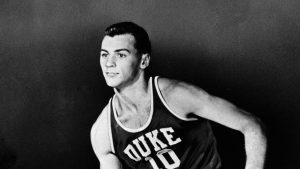
Some fun Facts About Dick Groat
1. Multi-Sport Talent: Dick Groat is one of only 13 athletes to have played both Major League Baseball and the National Basketball Association.
2. Dual MVP: In 1960, he won the National League batting title with a .325 average and was also the Most Valuable Player (MVP) of the 1960 World Series despite his injury.
3. Impressive College Career: Groat was an All-American in basketball at Duke University and won the UPI Player of the Year award in 1952. He also led Duke to multiple Southern Conference titles.
4. Retired Jersey: His college basketball jersey number 10 was retired by Duke, and he was inducted into the Collegiate Basketball Hall of Fame.
5. Basketball Career: Despite his successful baseball career, Groat played for the Fort Wayne Pistons in the NBA for one season, averaging 11.9 points per game.
6. Notable Feat in the 1960 World Series: Groat helped the Pirates win the 1960 World Series against the New York Yankees. In Game 7, Groat ignited a 5-run rally to help secure a 10-9 win.
7. Record with Pirates: He was the first Pirates player since Honus Wagner to win the batting title with a .325 average in 1960.
8. Unique Stats: Groat set a dubious MLB record in 1955 for most at-bats (520) without a home run or stolen base in a single season.
9. Golf Enthusiast: After retiring from sports, Groat became passionate about golf. He co-designed Champion Lakes Golf Course in Ligonier, Pennsylvania, in 1964.
10. Family Ties: Groat was the great-uncle of professional golfer Brooks Koepka, who won multiple U.S. Open and PGA Championships.
11. Pirates Hall of Fame: Although not included in the inaugural class, Groat was inducted into the Pirates Hall of Fame in 2023, just days before his passing.
12. Long-Time Announcer: Groat was a color analyst for the Pittsburgh Panthers men’s basketball for 40 seasons, a tenure that ended in 2019.
Dick Groat MLB Career Statistics
| Category | G | BA | AB | R | H | 2B | 3B | HR | RBI | SB | CS | BB | SO | OBP | SLG | OPS | E | FLD% |
|---|---|---|---|---|---|---|---|---|---|---|---|---|---|---|---|---|---|---|
| Total | 1,929 | .286 | 7,484 | 829 | 2,138 | 352 | 67 | 39 | 707 | 17 | 27 | 490 | 512 | .330 | .366 | .696 | 376 | .961 |
Dick Groat NBA Career Statistics (Regular Season)
| Year | Team | GP | MPG | FG% | FT% | RPG | APG | PPG |
|---|---|---|---|---|---|---|---|---|
| 1952–53 | Fort Wayne | 26 | 25.5 | .368 | .790 | 3.3 | 2.7 | 11.9 |

FAQs
1. Who Is Dick Groat?
Dick Groat (November 4, 1930 – April 27, 2023) was an American professional athlete renowned for his exceptional dual-sport career in both Major League Baseball (MLB) and the National Basketball Association (NBA).
He is celebrated as one of the most accomplished two-sport athletes in American sports history.
2. What were the two major professional sports Dick Groat played in?
Dick Groat had an exceptional career in both Major League Baseball (MLB) as a shortstop and in professional basketball as a point guard in the NBA.
3. What achievement made Dick Groat famous in both sports?
He became one of the few athletes to play both Major League Baseball and the National Basketball Association (NBA), excelling in both.
He was named an MLB All-Star multiple times and earned World Series Champion status with the Pittsburgh Pirates in 1960. He was also a Consensus All-American in college basketball at Duke University.
4. What did Dick Groat accomplish in the 1960 World Series?
Despite playing with a fractured wrist, Groat contributed significantly in the 1960 World Series against the New York Yankees.
He made key plays in the Pirates’ 4-3 victory in Game 5, including an RBI single and a crucial double play. His leadership and clutch performances helped the Pirates win the series.
5. What was Groat’s career-high season in baseball?
In 1963, with the St. Louis Cardinals, Groat had his best season, setting career highs in hits (201), doubles (43), triples (11), RBIs (73), on-base percentage (.377), and slugging percentage (.450), finishing second in the NL MVP voting.
6. How did Groat’s basketball career affect his baseball career?
Although Groat had a promising basketball career, he was forced to leave the NBA after one season due to concerns from his baseball team, the Pittsburgh Pirates.
They feared that his dual-sport career could affect his health and performance in baseball.
7. What was Dick Groat’s impact on the Pittsburgh Pirates?
Groat played an integral leadership role with the Pittsburgh Pirates, helping the team achieve its first World Series Championship in 35 years in 1960.
He was named the Pirates team captain and was considered one of the most reliable players in their history, both defensively and offensively.
8. What was Dick Groat’s relationship with the city of Pittsburgh after retirement?
Groat remained a beloved figure in Pittsburgh long after his playing days.
He spent 40 years as the radio color analyst for the Pittsburgh Panthers basketball team and contributed to the community, including being active in golf course design.
9. What was Dick Groat’s connection to famous golfer Brooks Koepka?
Groat was the great-uncle of Brooks Koepka, a multiple-time U.S. Open and PGA Championship winner, continuing the family legacy of athletic excellence.
10. How did Groat’s playing style impact the game of baseball?
Known for his hit-and-run ability and mastery of the strike zone, Groat was one of the most difficult hitters to defend against during his era.
He was admired for his steady consistency, leadership, and ability to produce offensively without relying on power.
11. What honors did Dick Groat receive posthumously?
In 2023, Groat was elected to the Pirates Hall of Fame shortly before his death, recognizing his incredible contributions to the team and his career as a baseball legend.
In conclusion
Dick Groat was a legendary athlete who made an unforgettable impact in both Major League Baseball (MLB) and the National Basketball Association (NBA).
He is widely regarded as one of the greatest two-sport athletes in history, excelling in both sports at the highest levels.
His career achievements include an MLB World Series title, eight All-Star selections, and an NL MVP award in 1960.
In basketball, he was a standout at Duke University and played one season for the Fort Wayne Pistons, showcasing his incredible versatility.
Groat’s legacy extends beyond his playing days, with notable post-retirement roles as a radio analyst for the Pittsburgh Panthers men’s basketball and his contributions to golf.
His induction into the Pirates Hall of Fame in 2023, shortly before his passing, solidified his place as one of the greatest figures in Pittsburgh sports history.
Groat’s dedication, talent, and leadership have left a lasting influence on both sports, and his influence continues to be felt today.
Discover more from Labaran Yau
Subscribe to get the latest posts sent to your email.
